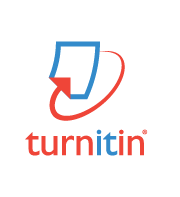Identifikasi dan Eliminasi Pemborosan Aktivitas pada Proses Produksi Suku Cadang dengan Pendekatan Lean Manufacturing
Abstract
Keywords
Full Text:
PDFReferences
Badan Pusat Statistik (2018) Berita Resmi Statistik Pertumbuhan Produksi Industri Manufaktur Triwulan IV-2017. Jakarta. Tersedia pada: https://www.bps.go.id/pressrelease/2018/02/01/1479/pertumbuhan-produksi-industri-manufaktur-besar-dan-sedang-triwulan-iv-tahun-2017-naik-sebesar-5-15-persen-dan-pertumbuhan-produksi-industri-manufaktur-mikro-dan-kecil-triwulan-iv-2017-naik-sebesar-4-59-pe.
Doggett, A. M. (2005) “Root Cause Analysis: A Framework for Tool Selection,” Quality Management Journal, 12(4), hal. 34–45. doi: 10.1080/10686967.2005.11919269.
Fanani, Z. dan Singgih, M. L. (2011) “Implementasi Lean Manufacturing untuk Peningkatan Produktivitas (Studi Kasus pada PT. Ekamas Fortuna Malang),” in Prosiding Seminar Nasional Manajemen Teknologi XIII. Surabaya: Program Studi MMT-ITS. Tersedia pada: http://mmt.its.ac.id/download/SEMNAS/SEMNAS XIII/MI/44. Prosiding Zaenal Fanani-OK-PRINT.pdf.
Gaspersz, V. (2007) The Executive Guide to Implementing Lean Six Sigma. Jakarta: Gramedia Pustaka Utama.
Hines, P. dan Rich, N. (1997) “The Seven Value Stream Mapping Tools,” International Journal of Operations and Production Management, 17(1), hal. 46–64. doi: 10.1108/01443579710157989.
Kusuma, S. A. (2010) Penerapan Lean Manufacturing dalam Mengidentifikasi dan Meminimasi Waste di PT. Hilton Surabaya. Universitas Pembangunan Nasional “Veteran” Jawa Timur.
Martin, K. dan Osterling, M. (2014) Value Stream Mapping. New York: McGraw-Hill.
Nash, M. A. dan Poling, S. R. (2008) Mapping the Total Value Stream. New York: CRC Press.
Rawabdeh, I. A. (2005) “A Model for the Assessment of Waste in Job Shop Environments,” International Journal of Operations and Production Management, 25(8), hal. 800–822. doi: 10.1108/01443570510608619.
Rother, M. dan Shook, J. (1999) Learning to See Value Stream Mapping to Create Value and Eliminate Muda. 1 ed. Brookline: The Lean Enterprise Institute.
Utama, D. M., Dewi, S. K. dan Mawarti, V. I. (2016) “Identifikasi Waste pada Proses Produksi Key Set Clarinet dengan Pendekatan Lean Manufacturing,” Jurnal Ilmiah Teknik Industri, 15(1), hal. 36–46. doi: 10.23917/jiti.v15i1.1572.
Womack, J. P. dan Jones, D. T. (2003) Lean Thinking: Banish Waste and Create Wealth in Your Corporation. 2 ed. New York: Free Press. doi: 10.1007/BF01807056.
DOI: http://dx.doi.org/10.30813/jiems.v12i2.1667
Refbacks
- There are currently no refbacks.




